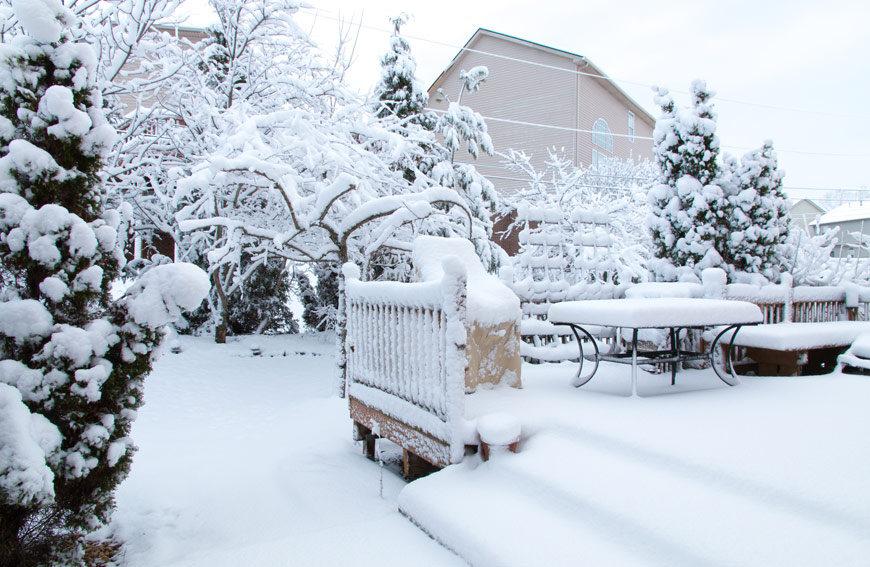Shrubs and trees can be damaged from extreme winter conditions. Just the cold alone has the ability to damage the bark, affect the branches, and the roots. People and animals can also hard trees during the winter. Things such as using road salt can alter soil contents and kill the tree. Once food is scarce to the animals, they might resort to eating the bark and twigs. Our team at Five Star Tree Services want to go over some common winter tree damage and how you can protect your trees this winter.
Snow & Ice Breakage
Severe damage can be inflicted on your trees if there is a bad snow or ice storm. The weight can make branches break. The only thing you can do to try and prevent this is with cabling and bracing before winter sets in. This will help hold limbs up, even under the crushing weight. The best time to do this is either in the fall or early winter. Especially for big trees, it’s important to have a professional arborist complete this job.
Certain trees prone to snow and ice damage include:
-birch
-maple
-Siberian elm
If possible, try and safely remove built up snow from the branches to further prevent breaking.
Salt Damage
Salt is great for removing ice from driveways, sidewalks, and walkways but it is detrimental to tree. If it doesn’t end up killing the tree, they can suffer from other adverse effects, such as leaf scorch, browning of evergreens, and branch dieback.
Lower salt damage by:
-using sand instead of salt.
-only use salt in limited amounts and control spread it around where you need it before anything is frozen.
-barricade trees prone or exposed to salt damage. You can use snow fencing, burlap, or plastic fencing.
-in the spring, during a thaw, flush salt out of the soil.
-make sure the drainage is good around your trees to help direct salt away from them.
-make sure all your plants are healthy.
-have salt resistant trees planted close to where salt will be.
Salt resistant trees include:
-birch
-red oak
-poplar
Salt intolerant trees include:
-sugar maple
-spruce
-white pine
-basswood
Cold Temperatures
Most trees have a minimum cold tolerance level and there are some tree species that will be more prone to injury when the cold dips below these levels. Previously stressed trees are more likely to experience greater injury during the winter.
Animal Damage
Rodents such as rabbits, mice, and squirrels are known to damage trees by girdling. Deer’s can also be a problem, depending on where you live. What happens is that these animals eat tree bark when food is scarce. Mice can get to a tree from the ground under the snow, whereas rabbits can only reach the bark above the snow. Things like mulch, grass, and weeds can help mice get to the base of the trunk. Try to keep this area clear of these things.
The best way to protect your trees from these rodents is to wrap them and protect their branches. You can do so using a cloth, burlap, or a screen wire. Make sure to wrap all around the tree and cover it from below the ground line and high enough that rabbits can’t reach it. Also make sure to account for added height from the snow. If a rabbit could initially reach a foot up the tree trunk from the ground, think if there was already a foot of snow they could stand on. Play it safe and cover 3-4 feet up your tree.
Frost Heaving
This is when frost from the frozen ground freezes the soil and frequently thaws. What this does is it can force small or shallow-rooted plants to get pushed out of the ground, exposing their roots to the wind and cold.
You can help prevent this by using mulch as it serves as insulation and helps to regulate the moisture and temperature of the ground. If you do notice your plant has been heaved out of the ground, replant it once the soil has thawed.
How Five Star Tree Services Can Help
Taking these preventative measures can save your trees this winter. Our team at Five Star Tree Services can help you with our tree care services in Toronto! You can give us a call at (416) 990-3355 if you are interested in us helping you!


